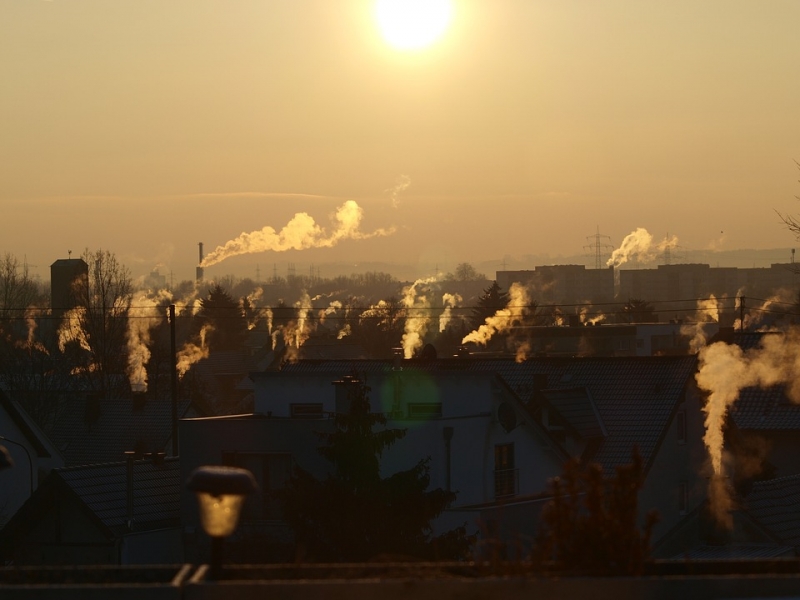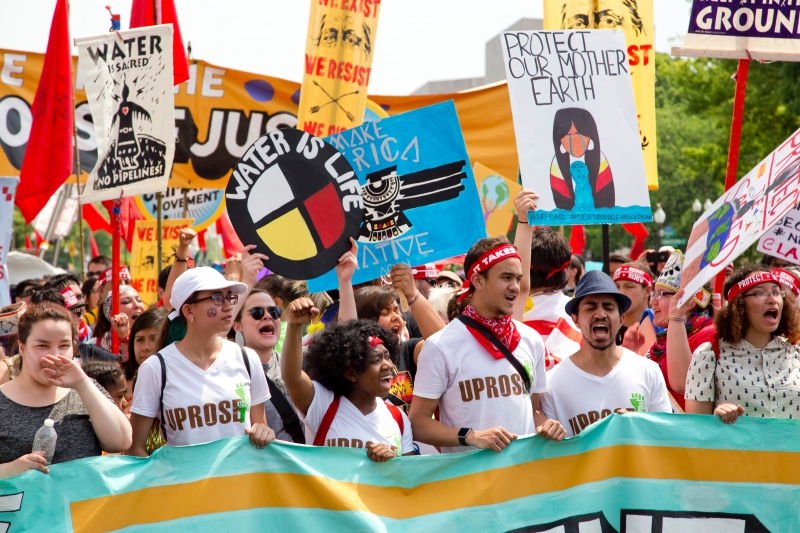Many nationally recognized environmental groups have adopted principles of equity and diversity into their missions over the past two decades, but the environmental justice movement and the marginalized groups that have historically driven the movement are often left out of the “mainstream” environmental discussion. Groups that lack political power such as people of color, people with disabilities, people of low income, the LGBTQ community, and women are often ignored by those with more social influence. Progress has certainly been made in recent years, but more opportunities exist to connect national-scale nonprofits to the groups who face the disproportionate effects of environmental degradation. This issue is highly important because the effects of environmental detriment disproportionally impact these minority groups, and is still a reality that many of these communities face every day. As such, it is essential to recognize that marginalized communities have had a significant impact on environmental policy, and it is imperative to continue to fight for more equitable conditions.
Countless disenfranchised communities have been unjustly faced with pollution and land seizure throughout the history of the United States. For example, indigenous peoples have had land continually annexed from them by the federal government, and have been harmed by pervasive uranium mining in western states. Even these actions that occurred decades or centuries ago have lasting impacts on the economic stability and health of these communities. Residents of the Navajo Nation on average still have higher levels of uranium in their bodies compared to the general U.S. population. Although the Navajo Nation banned uranium mining in 2005, abandoned mines continue to pollute water and cancer rates on the reservation are still high. These actions on indigenous peoples’ lands have had massive effects on the welfare of those living there today, and thus these past issues need to be resolved in addition to the myriad of new environmental problems that continue to develop.
 Marginalized communities have not only dealt with the harmful actions of governments and industries, but also have been affected by actions of conservationists. The friction between any local community and outsider nonprofits often stems from disputes over land use and the struggle between economic stability and environmental protection. One conservation project in 1987 led by an environmental group sought to ban sheep grazing on Chicano-owned pastures with the intention of preserving the wilderness. While the sheep were considered to be a threat to native plant populations, the community depended on this practice to sustain themselves. In the same decade, other conservation organizations supported annexation of ancestral land to create National Monuments such as in El Malpais in New Mexico. This action was intended to protect wilderness areas and benefit the environment, but the decision did not fully take into consideration the interests of these communities. As evidenced by such a contentious situations, the lack of dialogue between local people and environmental groups can lead to oppressive projects and put communities with long-standing relationships with the land in a very vulnerable position.
Marginalized communities have not only dealt with the harmful actions of governments and industries, but also have been affected by actions of conservationists. The friction between any local community and outsider nonprofits often stems from disputes over land use and the struggle between economic stability and environmental protection. One conservation project in 1987 led by an environmental group sought to ban sheep grazing on Chicano-owned pastures with the intention of preserving the wilderness. While the sheep were considered to be a threat to native plant populations, the community depended on this practice to sustain themselves. In the same decade, other conservation organizations supported annexation of ancestral land to create National Monuments such as in El Malpais in New Mexico. This action was intended to protect wilderness areas and benefit the environment, but the decision did not fully take into consideration the interests of these communities. As evidenced by such a contentious situations, the lack of dialogue between local people and environmental groups can lead to oppressive projects and put communities with long-standing relationships with the land in a very vulnerable position.
In response to ongoing environmental injustices, many communities have advocated for themselves with varying degrees of success. The fight for environmental justice has been ongoing for centuries, but it wasn’t until the 1980s that organized groups began to gain more traction fighting environmental injustices like toxic waste dumping, excessive air pollution, and the unequal distribution of industrial facilities. In 1982, a predominately African-American community in Warren County, North Carolina, protested the placement of a hazardous landfill in their neighborhood. A coalition formed to fight the landfill, and although they were unsuccessful in halting development, their protests led to impactful studies showing a link between race and industrial pollution in neighborhoods. In addition to triggering research, the public attention these protests received sparked other movements throughout the country. In 1988, protestors in New York City fought the development of the North River Sewage Treatment Plant, which would pollute the air in a predominantly black, low-income area. While their initial actions did not stop construction, the community-based organization West Harlem Environmental Action and the NRDC were able to sue the city and establish a fund to address community environmental health concerns. The suit also forced the city to spend $55 million to remediate odors from the plant, which demonstrated that people could hold polluters accountable in a significant way. Following the success of this lawsuit, communities of color have been able to use litigation and organized protest to fight back against oppressive polluters.
Currently, climate change is one of the most significant environmental issues, and many conservation groups are devoted to solving it. But it is important to consider that the impacts of climate change disproportionately harm people of the global south and low-income communities across the world. For example, an indigenous village in Newtok, Alaska, is under immediate threat from sea-level rise. This remote village lacks the funding to easily relocate and needs assistance to do so. The problem facing this village highlights societal inequity, for the community members have not emitted significant levels of greenhouse gases, yet are facing the climate consequences from early-industrialized countries. It is imperative to include communities like the villagers in Newtok in decisionmaking processes to create impactful policy solutions that take into account multiple perspectives. By creating equitable solutions, and taking into account the voices of marginalized communities in decisionmaking, organizations can create more robust solutions and give a voice to people who have been muted by those in power for centuries.
 Disenfranchised communities have made a substantial impact on environmental policy through protests, coalition-building, litigation, and other direct action. There are many examples of community-driven influence, illustrated by recent publications on environmental justice and climate justice. Marginalized groups have often succeeded in their advocacy, yet they still need support from outside entities to subvert the power structures that are harming them. Currently, there are many large nonprofit groups that have the ability to influence policy and defend communities. Organizations must prioritize involving such groups into the conversation to form equitable solutions to environmental problems. Recognizing history is crucial, and rectifying past harm is of the utmost importance to shaping a sustainable future that benefits everyone.
Disenfranchised communities have made a substantial impact on environmental policy through protests, coalition-building, litigation, and other direct action. There are many examples of community-driven influence, illustrated by recent publications on environmental justice and climate justice. Marginalized groups have often succeeded in their advocacy, yet they still need support from outside entities to subvert the power structures that are harming them. Currently, there are many large nonprofit groups that have the ability to influence policy and defend communities. Organizations must prioritize involving such groups into the conversation to form equitable solutions to environmental problems. Recognizing history is crucial, and rectifying past harm is of the utmost importance to shaping a sustainable future that benefits everyone.
